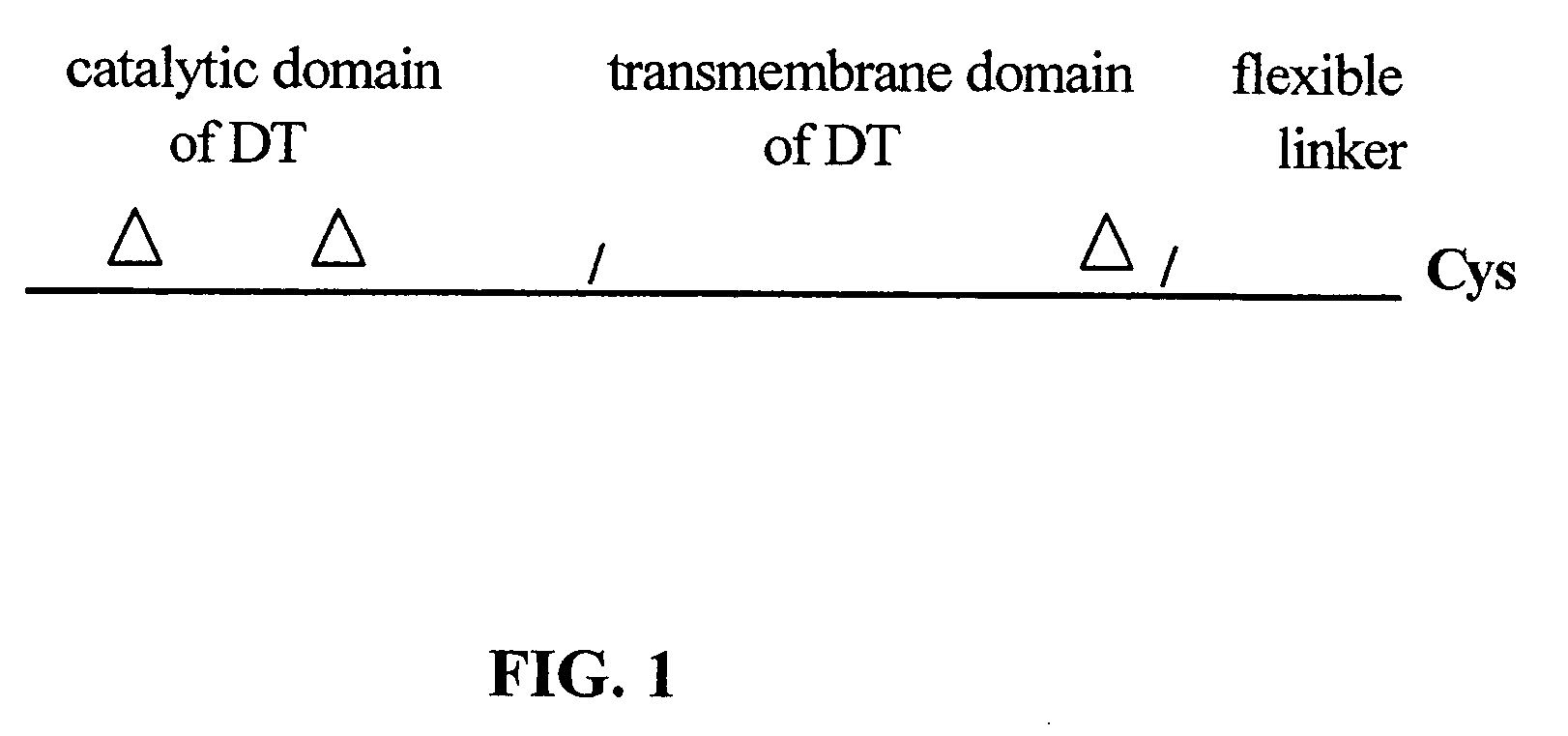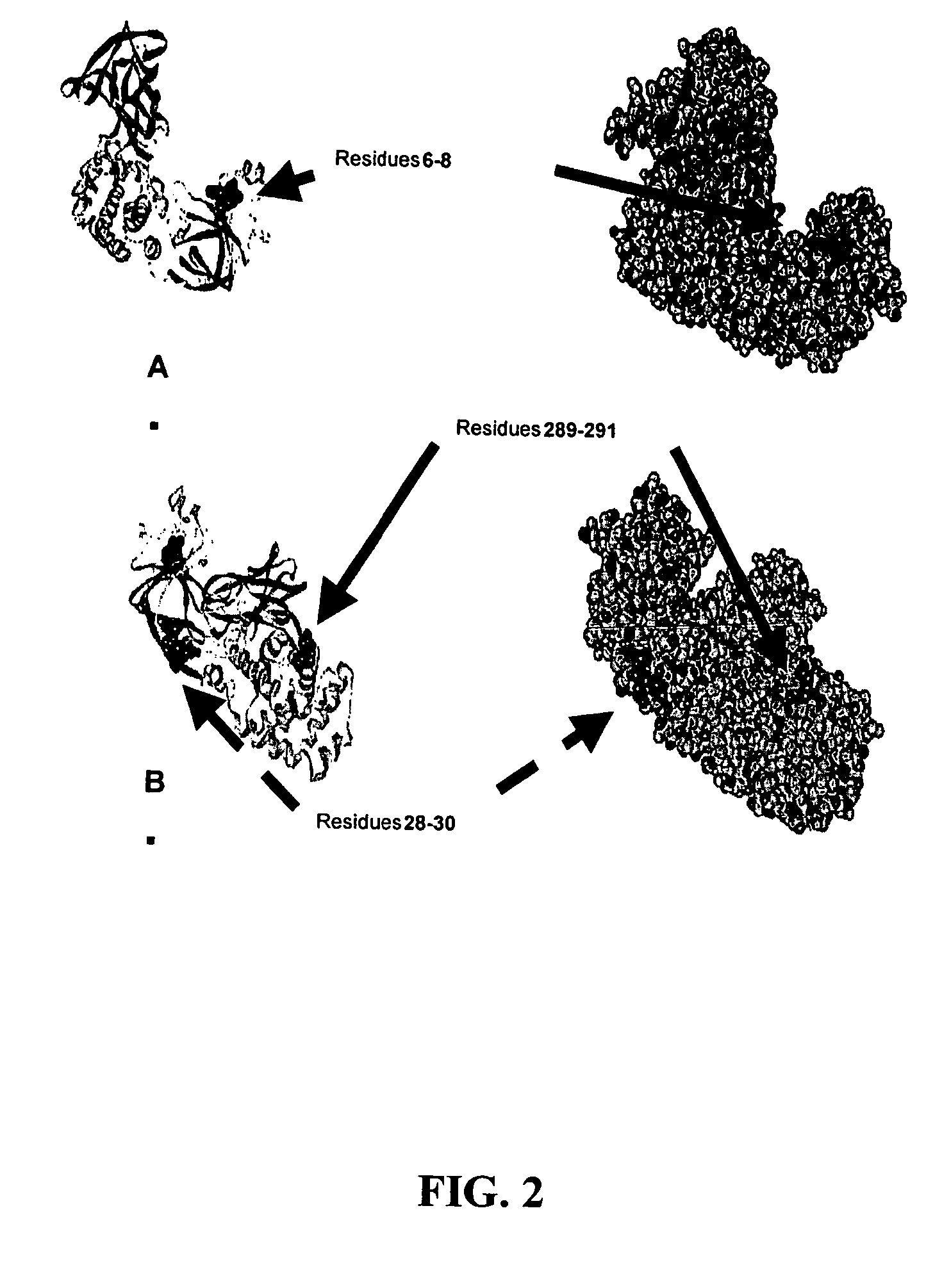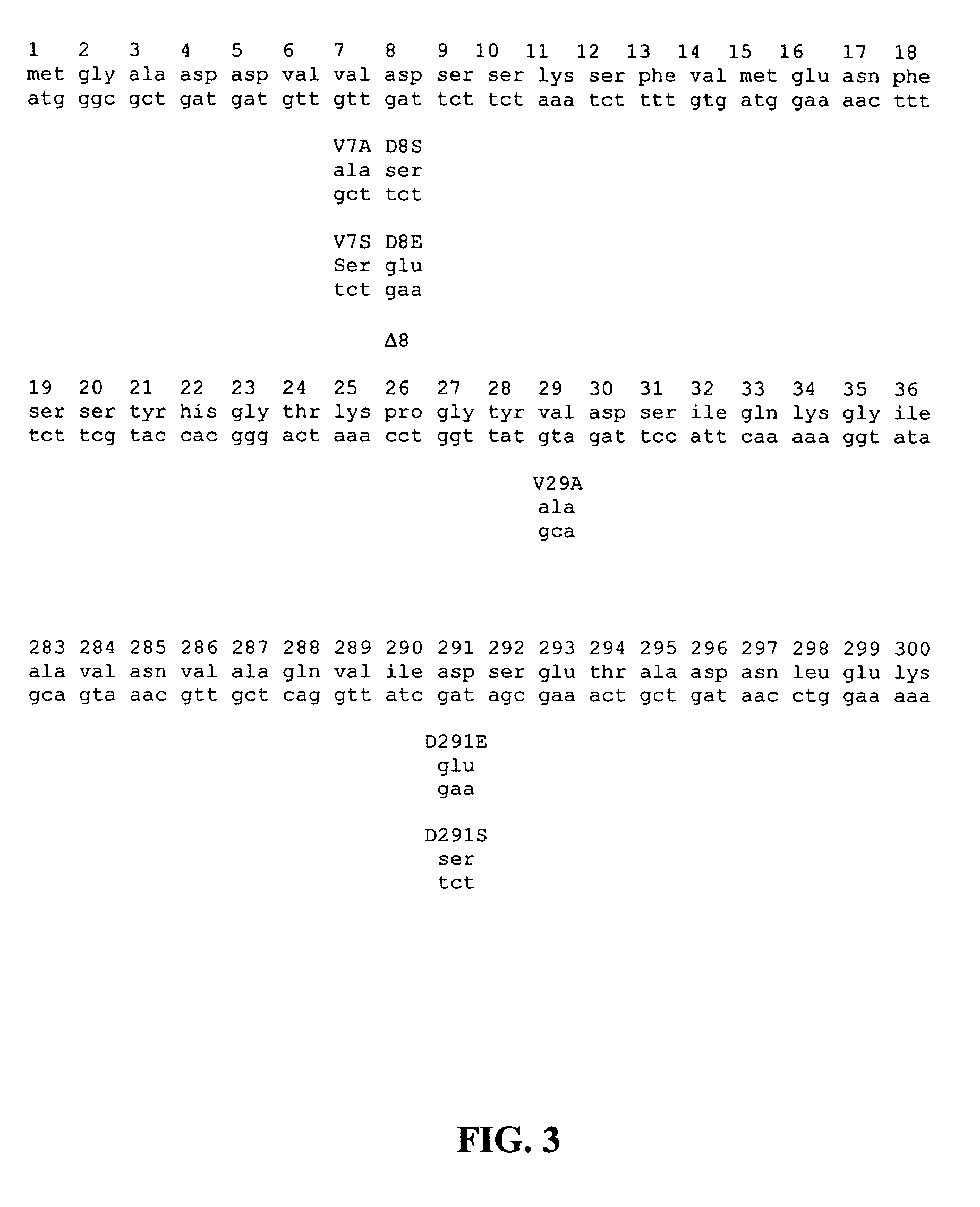Diphtheria toxin variant
a technology of diphtheria toxin and variant, which is applied in the field of modified variants of diphtheria toxin, can solve the problems of inability to resolve the active or highly active species from the inactive species, and the inability to cure the disease. , to achieve the effect of reducing binding and reducing the incidence of vascular leak syndrom
- Summary
- Abstract
- Description
- Claims
- Application Information
AI Technical Summary
Benefits of technology
Problems solved by technology
Method used
Image
Examples
example 1
Construction Expression and Purification of DT Variant and DT-fusion Proteins
[0069]1 (a) Construction of DT Variant and DT-fusion Proteins
[0070]A truncated DT-based toxophore comprising a methionine residue at the N-terminus, amino acid residues 1 through 386 (SEQ ID NO: 2) of the native DT (now residues 2-387 in the truncated toxophore), and two additional amino acids residues His and Ala at the C-terminal was constructed. The inclusion of the His and Ala residues was resulted from additional nucleotide sequences introduced during the cloning process. This construct is designated as DT387 SEQ ID NOs:5-6). A schematic diagram of DT387 is shown in FIG. 1 which is equivalent to the DAB389 construct described by Williams et al. with the exception that codon was altered and optimized for E. Coli rather than C. diphtheria. A similar construct containing amino acid residues 1 through 379 of the native DT, with a methionine residue at the N-terminal, was also constructed, which was designa...
example 2
Binding of DT Toxophores to HUVEC In Vitro
[0080]Human vascular endothelial cells were maintained in EGM media (obtained from Cambrex, Walkersville, Md.). Sub-confluent early passage cells were seeded at equivalent cell counts onto plastic cover slips. Purified, endotoxin free wild type DT toxophore and mutants DT38(V7AV29A)gscys and DT380(D8SD291S)gscys were labeled with the fluorescent tag F-150 (Molecular Probes, Eugene, Oreg.) through chemical conjugation. HUVECs were incubated with equivalent amounts of the labeled toxophores. The media was then aspirated, the cells washed and then, fixed and prepared for analysis. Examination of the cells on cover slips from different treatment groups permitted the analysis of the number of cells labeled by the fluorescent toxophore. No targeting ligand was present on the toxophore, and consequently, the level of HUVEC interaction was proportional only to the toxophores affinity for HUVECs. Comparisons were carried out using a fluorescent micro...
example 3
VLS Mutants Retain ADP-ribosyltransferase Activity
[0082]Ribosome inactivating protein toxins such as diphtheria toxin catalyze the covalent modification elongation factor tu (EF-tu). Ribosylation of a modified histidine residue in EF-tu halts protein systhesis at the ribosome and results in cell death. Ribosyltransferase assays to determine catalytic activity of the DT387 mutants are performed in 50 mM Tris-Cl, pH8.0, 25 mM EDTA, 20 mM Dithiothreitol, 0.4 mg / ml purified elongation factor tu, and 1.0 pM [32P]-NAD+ (10 mCi / ml, 1000 Ci.mmol, Amersham-Pharmacia). The purified mutant proteins are tested in a final reaction volume of 40 μl. The reactions are performed in 96 well, V-bottom microtiter plates (Linbro) and incubated at room temperature for an hour. Proteins are precipitated by addition of 200 μl 10% TCA and collected on glass fiber filters, and radioactivity dis etermined by standard protocols.
[0083]As shown in FIG. 7, DT mutants DT387(V7A), DT387(V7A)linkerIL-2, DT387(V7AV29...
PUM
 Login to View More
Login to View More Abstract
Description
Claims
Application Information
 Login to View More
Login to View More - R&D
- Intellectual Property
- Life Sciences
- Materials
- Tech Scout
- Unparalleled Data Quality
- Higher Quality Content
- 60% Fewer Hallucinations
Browse by: Latest US Patents, China's latest patents, Technical Efficacy Thesaurus, Application Domain, Technology Topic, Popular Technical Reports.
© 2025 PatSnap. All rights reserved.Legal|Privacy policy|Modern Slavery Act Transparency Statement|Sitemap|About US| Contact US: help@patsnap.com



